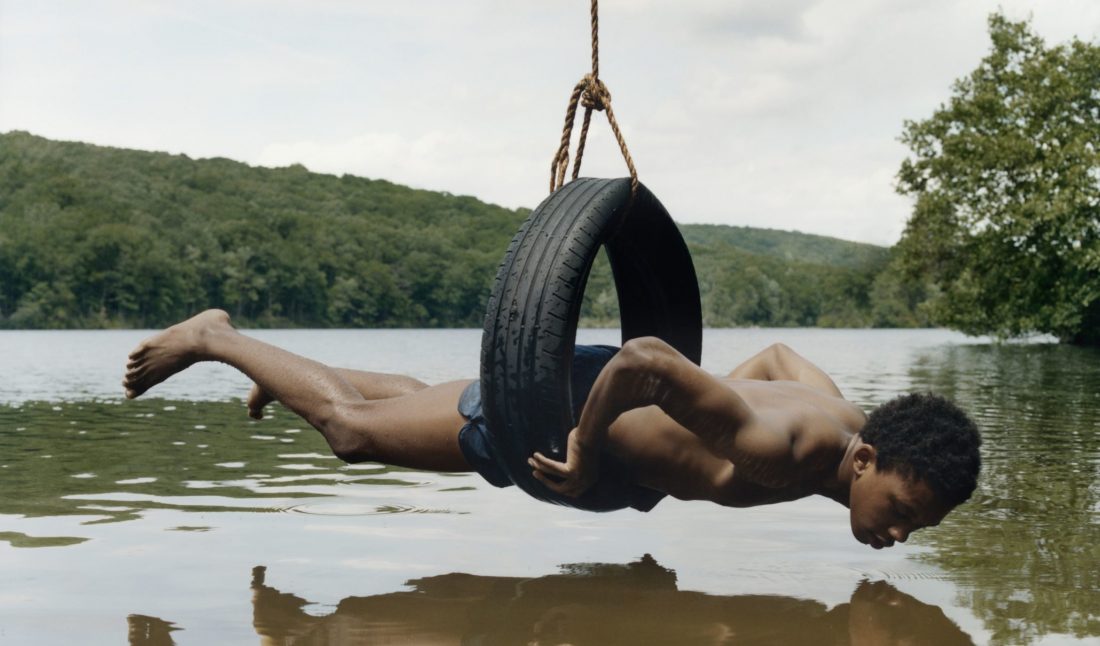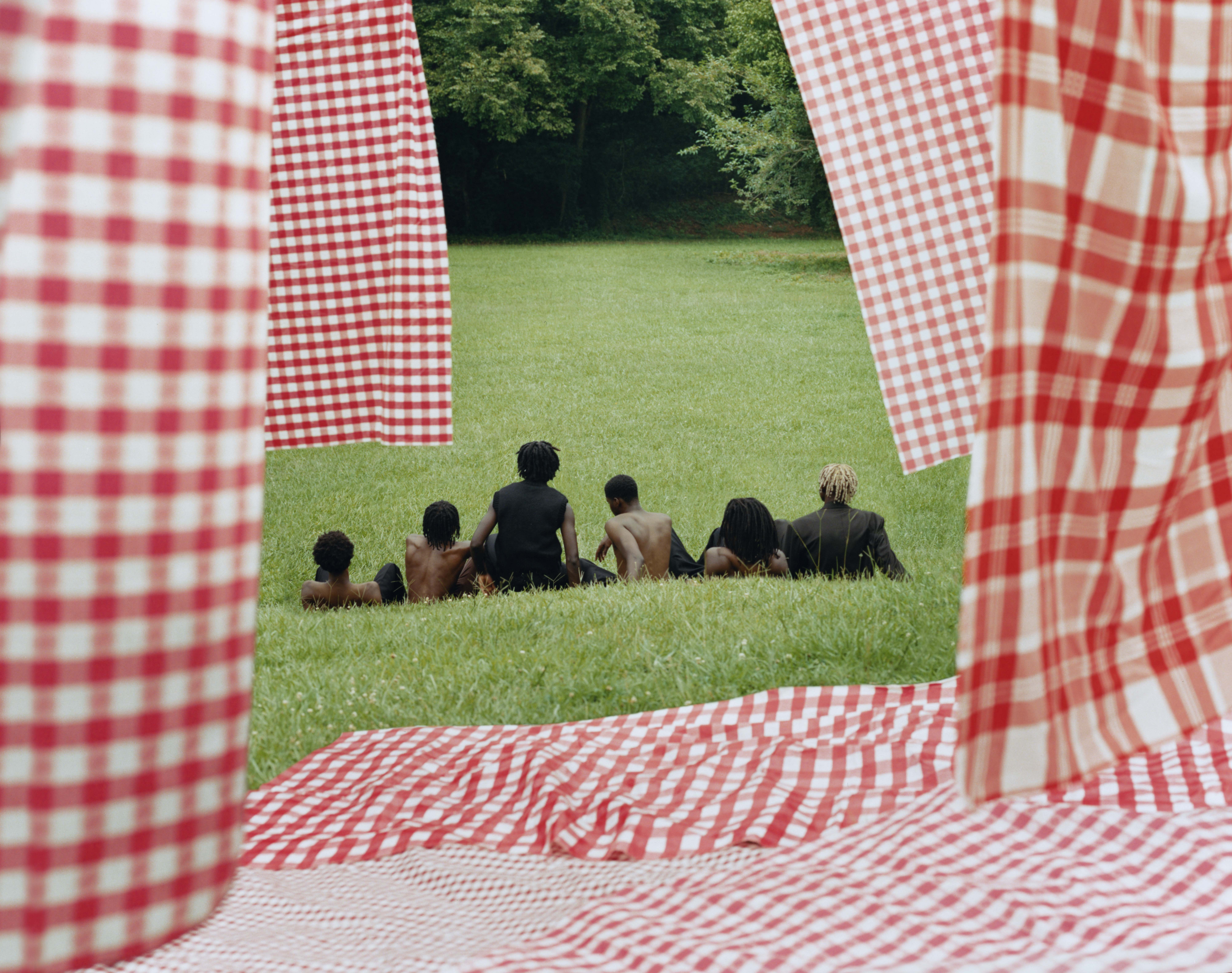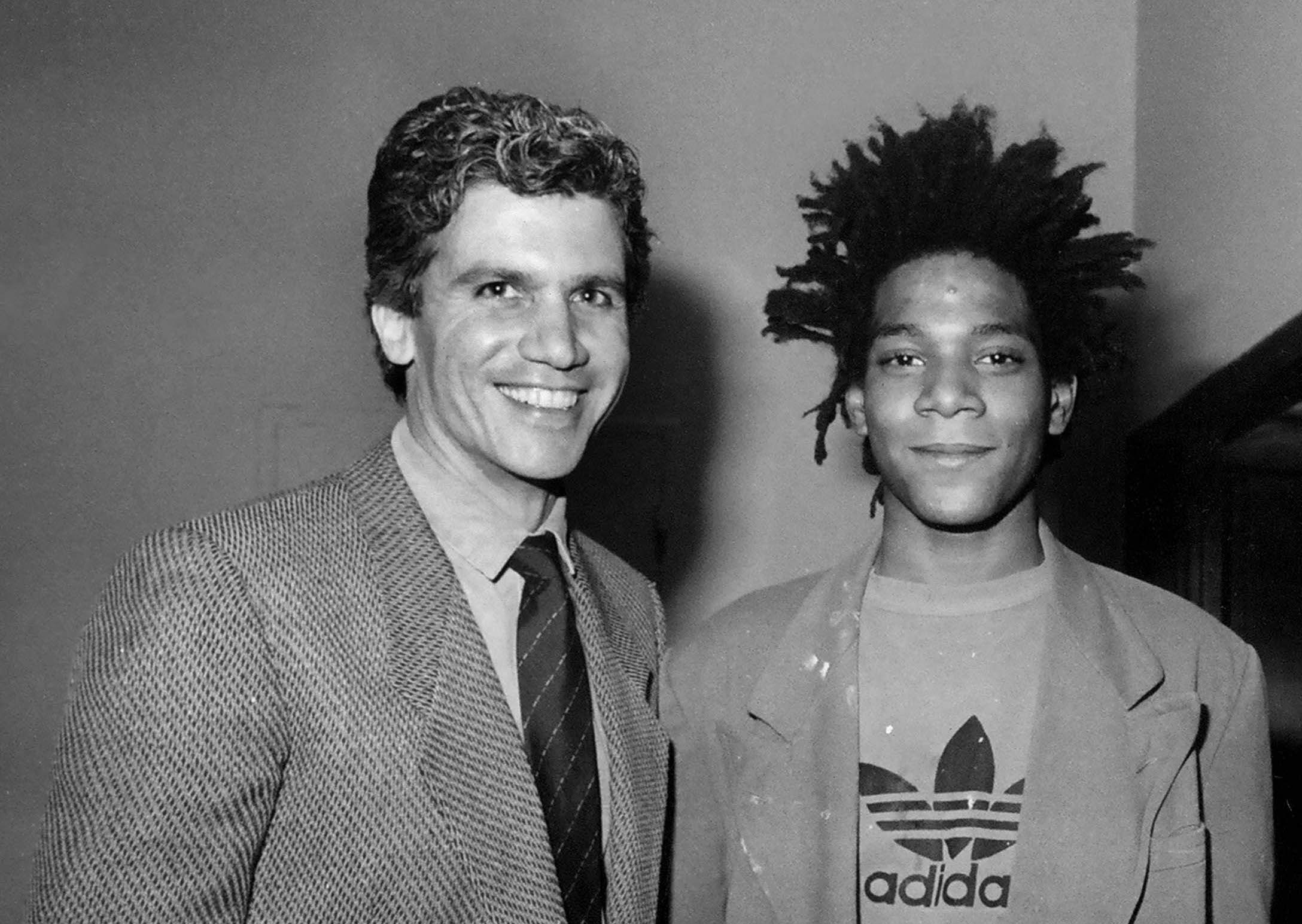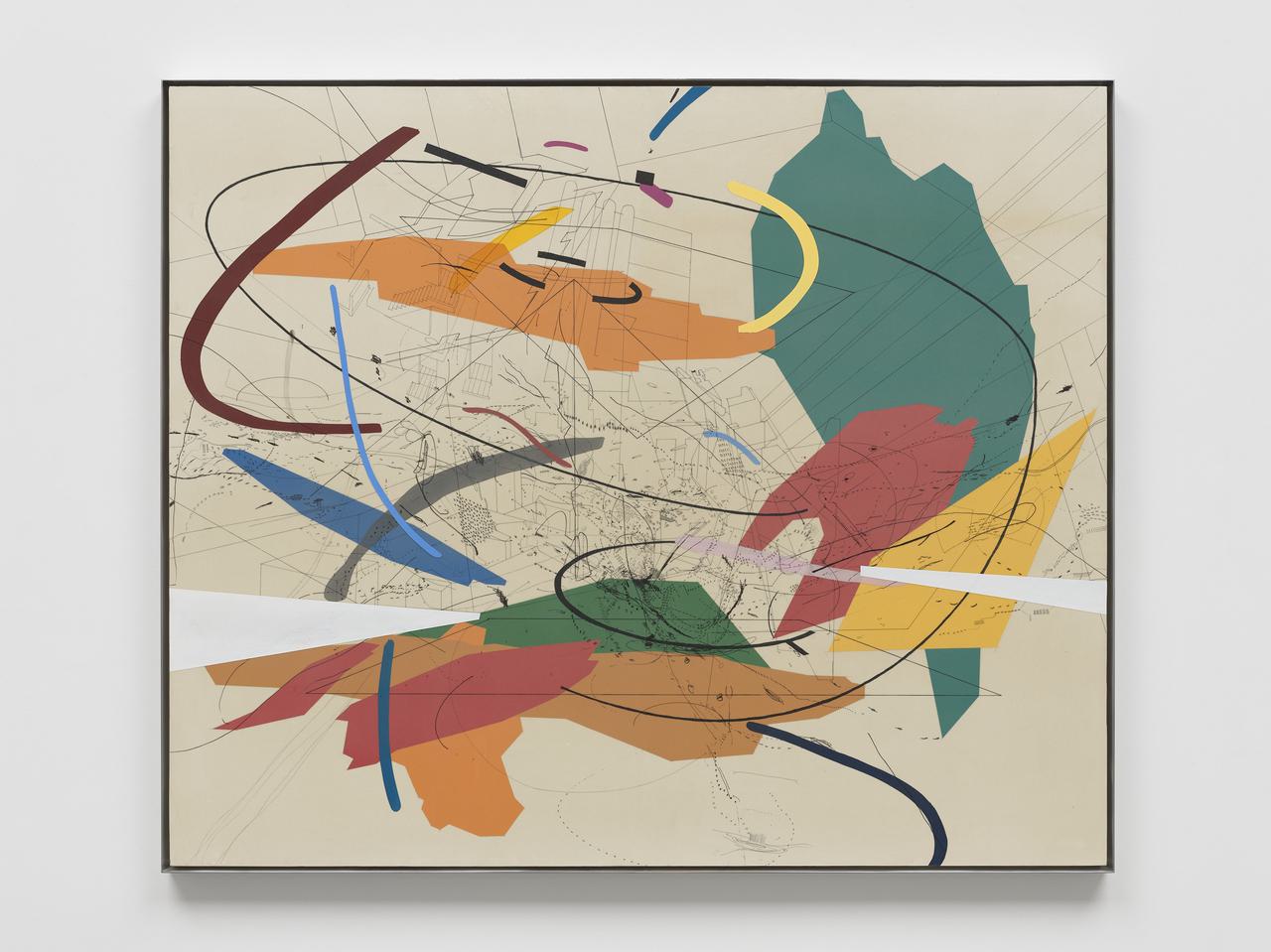Tyler Mitchell’s “Chrysalis” is on view through November 12, 2022, at Gagosian at Davies Street in London. The title of the solo show refers to the stage in which, within the shielded confines of a cocoon, a caterpillar transitions from a pupa to a butterfly, transitioning to its final form. Spanning symbolism across the 13-piece installation, it appears, first as a golden meshed mosquito net, draped above the sleeping figure of a young man, opening the show with a work that carries the name of the exhibit. Next, posing as an idyll of nature and leisure, it finds a secondary presence, occupying the pastoral setting that forms the foreground of each of Mitchell’s Edenic photographs.
Depicting youthful Black bodies immersed in contemporary landscapes, the photograph’s protagonists find themselves at the brink of adulthood, on the cusp of change, playing, sleeping, meditating, and reflecting. These cinematic tales of youthful innocence and coming-of-age are reminiscent of the idling splendors and wonders accompanying them.
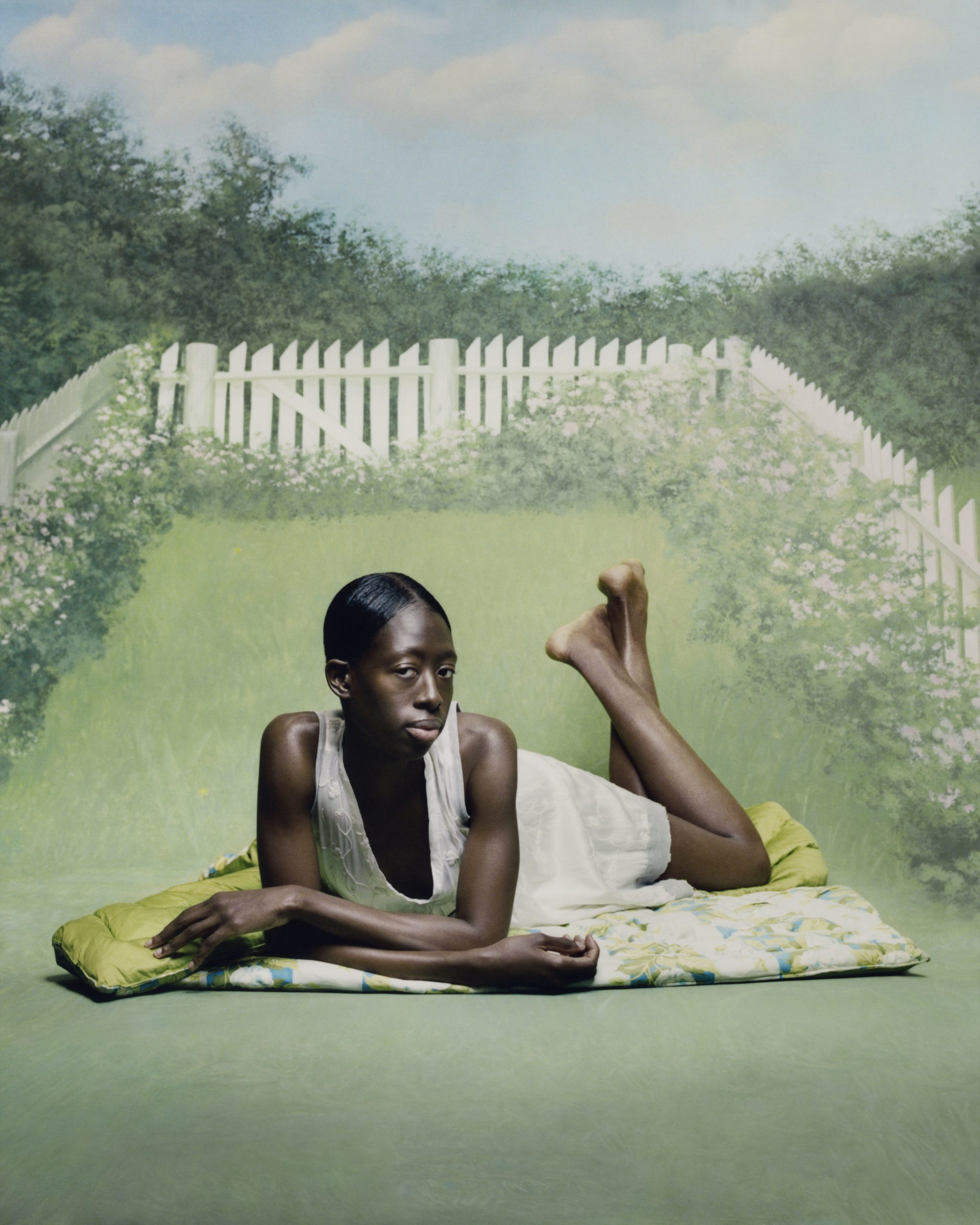 Tyler Mitchell, “Cage,” 2022, archival pigment print, 50 x 40 inches; © Tyler Mitchell, courtesy of the artist, Jack Shainman Gallery, and Gagosian.
Tyler Mitchell, “Cage,” 2022, archival pigment print, 50 x 40 inches; © Tyler Mitchell, courtesy of the artist, Jack Shainman Gallery, and Gagosian.
Poised in distinct transitional states, lost between awe and wonder, the youthful Black figures delve into the endless possibilities of leisure in nature, taking on an array of positions that adjoin an uncurbed freedom in space and time, paired with an unconflicted mind. In Tyler’s Simply Fragile (2022), a bare-chested man leans back on a patch of grass near neighboring water, fixating a downward gaze, cross-eyed, on a fleeting beetle settled on the tip of his nose. In A Glint of Possibility (2022), a young male figure hangs from a tire swing, resting in perfect equilibrium as he contemplates his reflection in the lake’s reverberating surface.
Tyler’s unassuming gaze captures the Black joy that lies in everyday moments, capturing the most serene and intimate moments that rests in the respite of their sheer insouciance. In communion with nature, the protagonists find themselves in positions of rest, reclining, suspension, or rather mid-movement, swimming, splashing, and playing with the natural elements in an instinctive and yet surreal playground that Gagosian’s Antwaun Sargent calls, “Both real and mythic.”
An optimistic dreamscape, Tyler’s world—part real, part imaginary—celebrates Black bodies that are free to exist, uninhibited by societal prejudice. Treading (2022), shows a boy’s head emerging from the water, surrounded by a cluster of balloons, mirroring his actions as they rise out of the water beside him. Playfully surreal and serene, it envisions the ease of youth of which Black folks are deprived.
Looking at Cage (2022), where a young Black woman lies propped by her elbows, her legs crossed up in the air against the foreground of a garden enclosed by a white picket fence, one starts to ponder on the flawlessness of Mitchell’s depicted Utopia. Using structures as visual signifiers, we see our subject encaged, and perhaps Mitchell’s utopia contained. Referencing the history of photographic images of Black people, Mitchell alludes to Black quietude and Black sitters with the painted foreground, while also materializing the separationist American symbol of the white picket fence, exclusive in its representation of American homesteads.
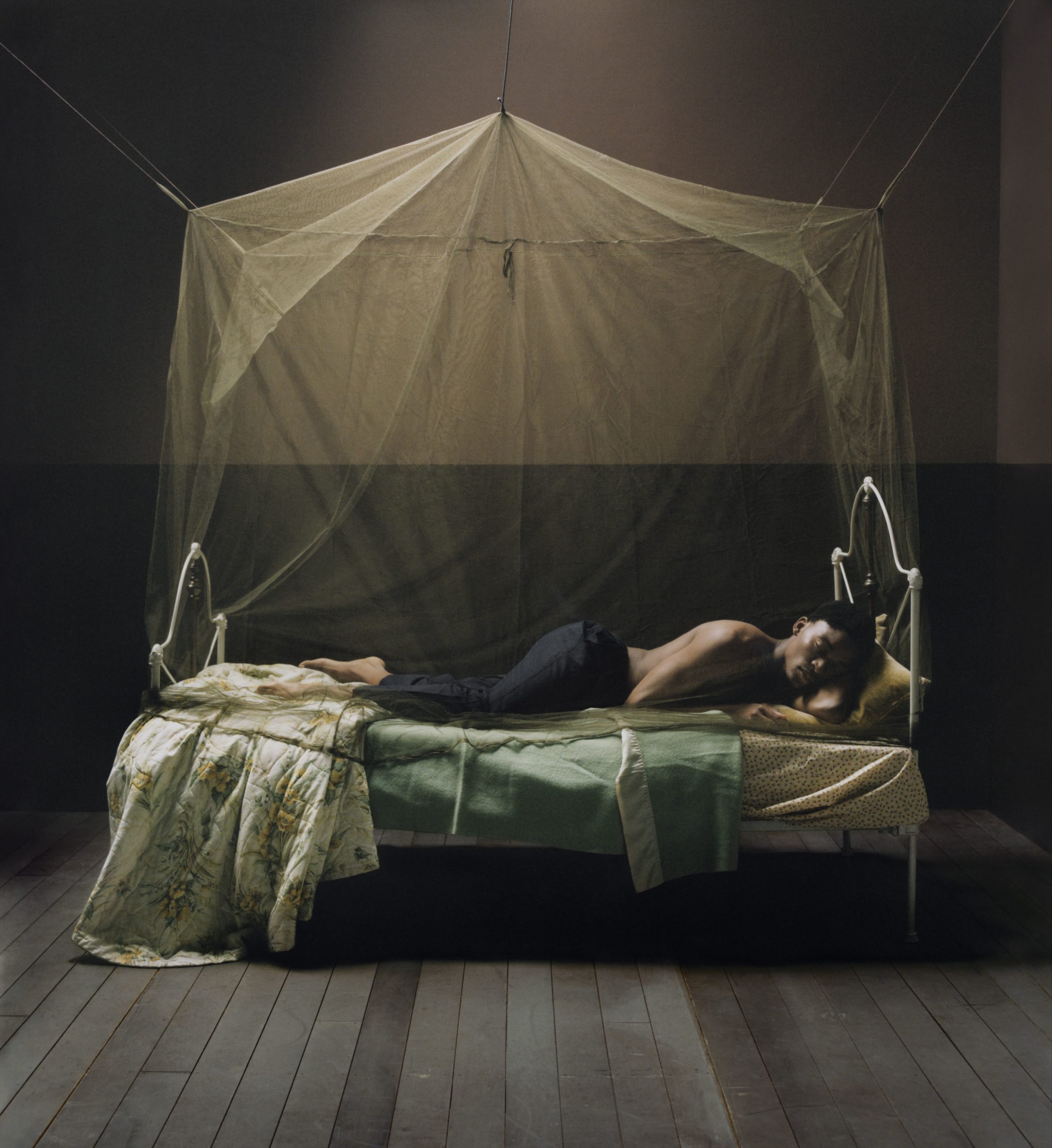 Tyler Mitchell, “Chrysalis,” 2022, archival pigment print, 50 x 45 13/16 inches; © Tyler Mitchell, courtesy of the artist, Jack Shainman Gallery, and Gagosian.
Tyler Mitchell, “Chrysalis,” 2022, archival pigment print, 50 x 45 13/16 inches; © Tyler Mitchell, courtesy of the artist, Jack Shainman Gallery, and Gagosian.
What Sargent calls an embedded “duality around Black identity, and how different movements, black gestures, have been interpreted in very different ways,” it touches upon W. E. B. Dubois concept of “double-consciousness” that denies a “carefree and dreaming youth.” by the very perversion of psychological and historical trauma.
Juxtaposed within this photographic trend of harmony, three consecutive large-scale images find themselves coupled with smaller frames of men wading, swimming, and struggling in muddy waters. Emanating a palpable sense of danger, it calls upon the vigilance that always lies at the foreground of their consciousness, pervading the Black experience of green spaces. Visualized in The Heart (2022), and Rapture (2022), our male protagonist is seen submerged under layers of sediment, struggling with the rippling effects of water and the clashing of elemental forces.
Mitchell’s narratives on the relationship between race and space are also present this week in London at Frieze Masters with a series of works inspired by historical paintings, after which he will be included in the Saatchi Gallery’s upcoming exhibition “The New Black Vanguard,” curated by Sargent. At the Victoria and Albert “Friday Late” on October 28, Mitchell will guest curate a series of live performances, film installations, DJ sets, and more, that encourage the audience to engage with images in new and unexpected ways, paving the way for the artist’s breakout moment in London, that, as Sargent noted, will further establish him as “one of the defining photographers of his generation.”
 © Tyler Mitchell, copyright the artist, courtesy of the artist, Jack Shainman Gallery, and Gagosian.
© Tyler Mitchell, copyright the artist, courtesy of the artist, Jack Shainman Gallery, and Gagosian.






